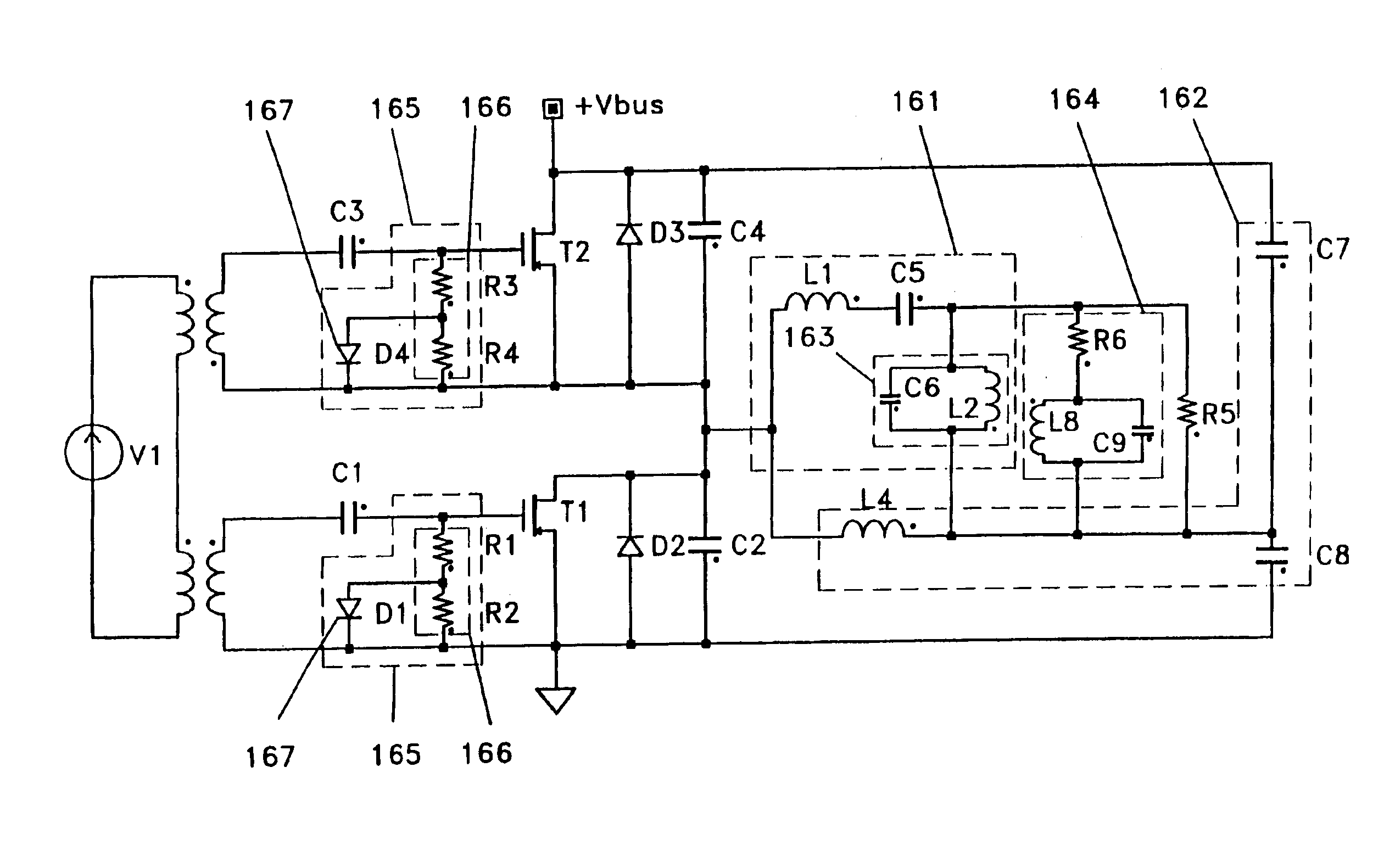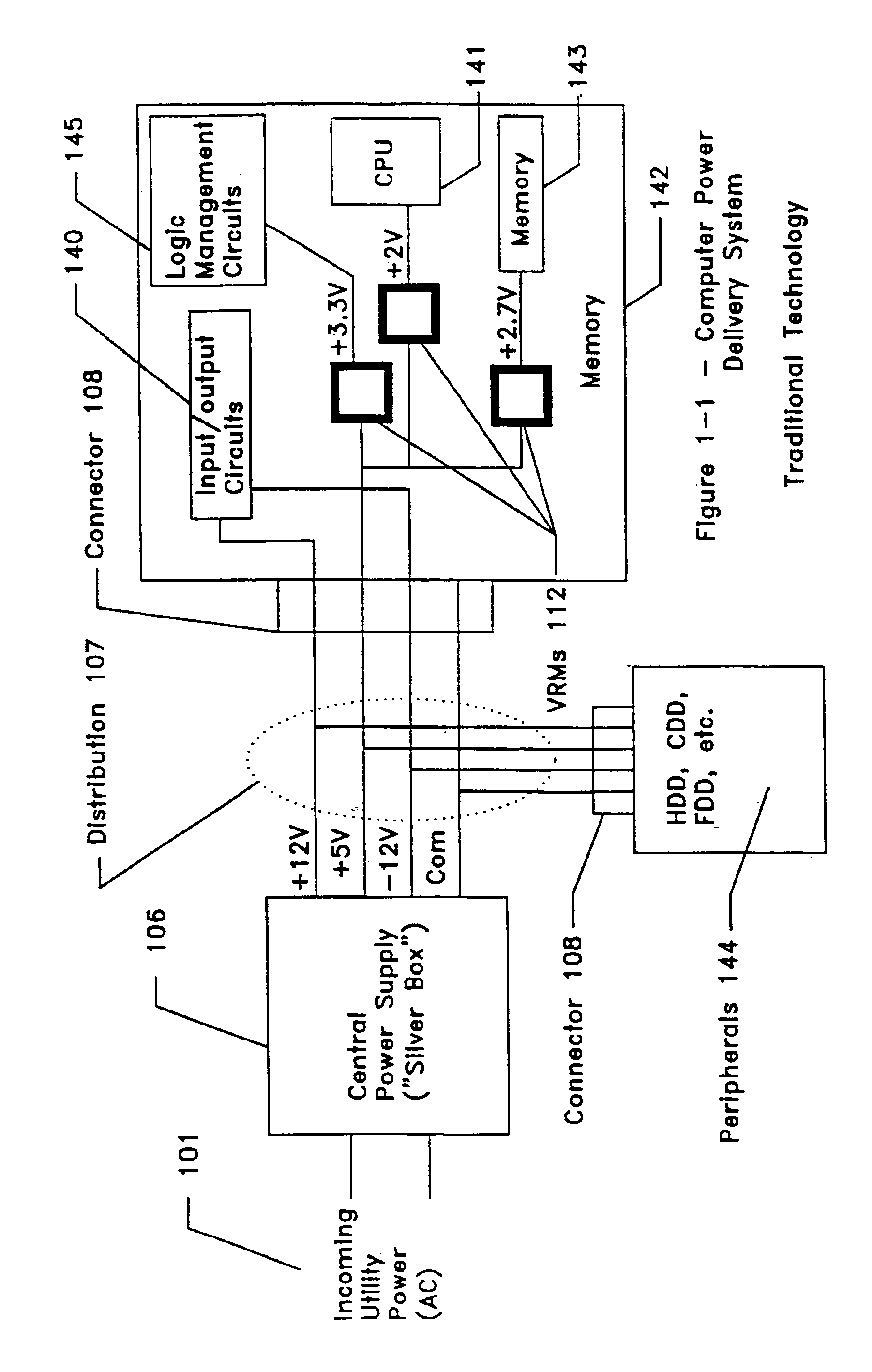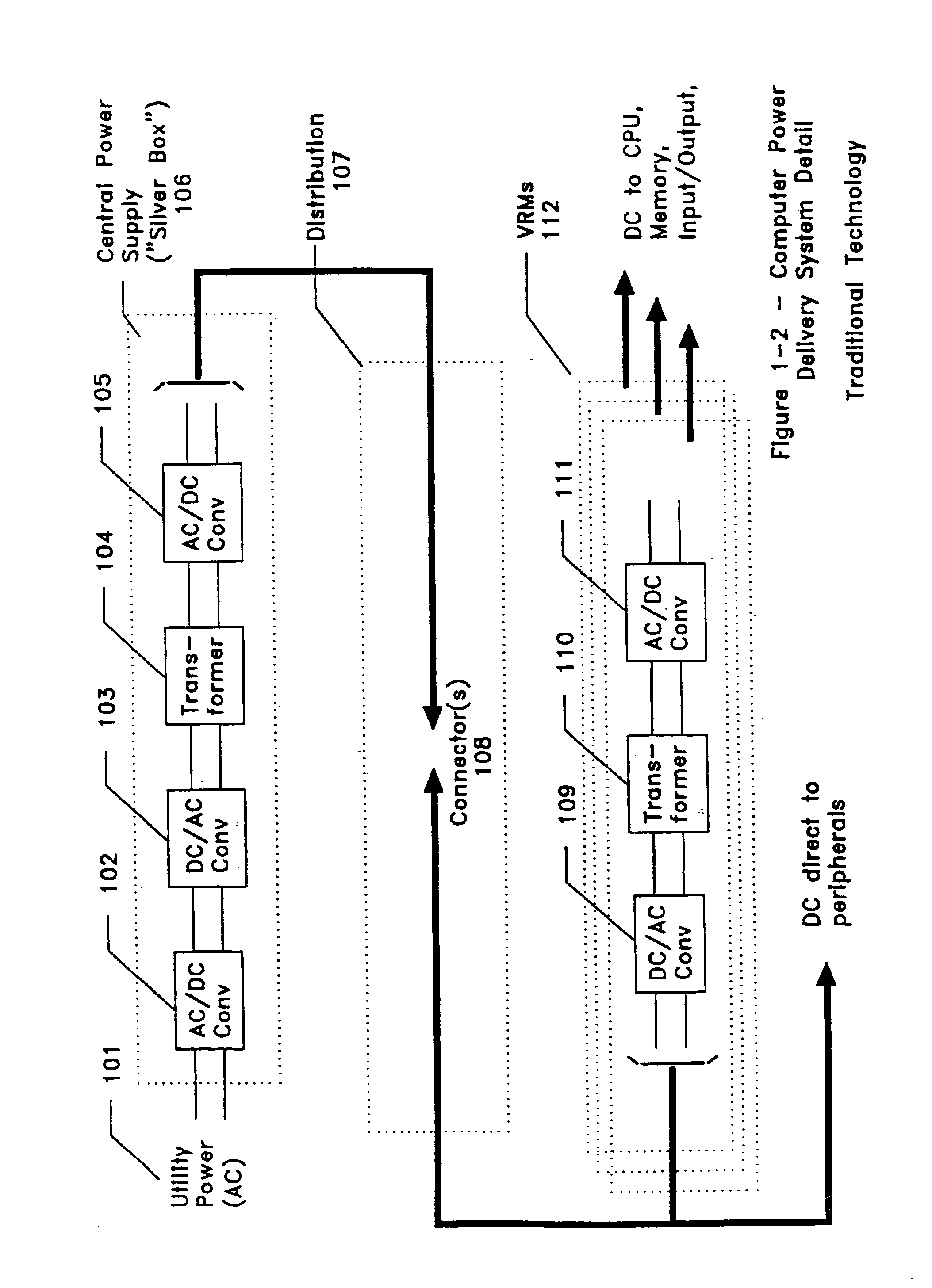Waveform independent high frequency power system
a power system and waveform technology, applied in the direction of electric variable regulation, process and machine control, instruments, etc., can solve the problems of low operating voltage of microprocessors, serious electrical consequences, and abrupt change of current drawn by the processor, and achieve the effect of low inductance connections
- Summary
- Abstract
- Description
- Claims
- Application Information
AI Technical Summary
Benefits of technology
Problems solved by technology
Method used
Image
Examples
examples
[0184]Choosing all the circuit parametric values can be a lengthy task. The following example is a general-purpose rectifier which maybe optimized for powering a microprocessor operating at 1.8 volts and requiring 20 amperes. Using the circuit of FIG. 3-3 the following parametric values may be appropriate:
[0185]
Frequency3.3MHzTurns ratio5:1Input voltage30VACLT30nHCT10nFCin2nFL1 & L2100nHCo500μFSR1 & SR23ea. FDS6880Conduction angle266degreesDelay angle24degrees
[0186]FIG. 3-5 shows one embodiment of a SR gate drive; it consists of summation of sinusoidal signal derived from the AC input plus a control signal. Also, the signal derived from the AC input can have an optimal delay for high efficiency. This circuit can produce a clean ac voltage by taking advantage of the gate transformer leakage inductance and the gate capacitance to filter harmonics from the ac input. This circuit can also show the creation of delay using R1,2, the combination of C1,2 (which includes the adjunct gate to ...
PUM
 Login to View More
Login to View More Abstract
Description
Claims
Application Information
 Login to View More
Login to View More - R&D
- Intellectual Property
- Life Sciences
- Materials
- Tech Scout
- Unparalleled Data Quality
- Higher Quality Content
- 60% Fewer Hallucinations
Browse by: Latest US Patents, China's latest patents, Technical Efficacy Thesaurus, Application Domain, Technology Topic, Popular Technical Reports.
© 2025 PatSnap. All rights reserved.Legal|Privacy policy|Modern Slavery Act Transparency Statement|Sitemap|About US| Contact US: help@patsnap.com



